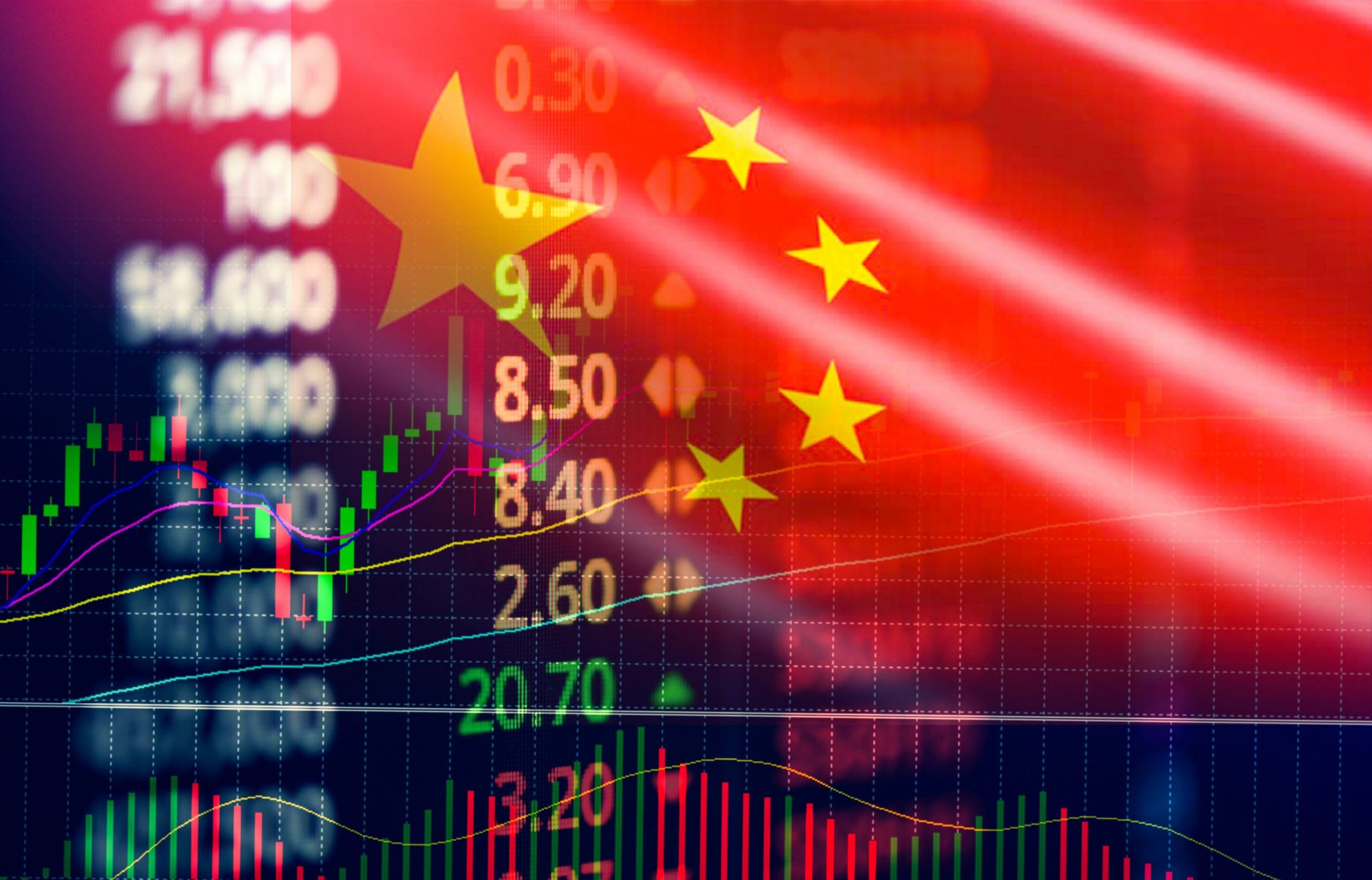Overview
China’s response to the establishment of a Taiwanese Representative Office in the Lithuanian capital Vilnius serves as the most recent example of the perniciousness of economic coercion. Since China’s “Go Out” economic policy was implemented more than two decades ago, the Chinese government’s economic leverage over its neighbors and further abroad has grown so significantly that economic coercion has become China’s go-to geopolitical tool of influence.
Recognizing the seriousness of the threat posed by Chinese economic coercion to regional neighbors, this blog post examines three targets of China’s economic coercion that all have significant security ties with the United States: South Korea, Taiwan, and Australia. South Korea, Taiwan, and Australia were chosen as case studies due to the notoriety and catalysts that surrounded their experiences with Chinese economic coercion. For South Korea, this was the deployment of U.S. military equipment; for Taiwan, this was vocal government opposition to China’s hostilities; and for Australia, this was increased Australian scrutiny about human rights abuses in Hong Kong and Xinjiang. By examining these three cases of economic coercion, this blog post will provide recommendations for U.S. policymakers who desire to better support allies and partners targeted by Chinese economic coercion.
South Korea
China’s response to the 2017 deployment of the U.S. Department of Defense’s Terminal High Altitude Area Defense (THAAD) anti-ballistic missile system in South Korea serves as a clear example of how economic coercion helped the Chinese government achieve a geostrategic goal. The U.S. Department of Defense and the South Korean Ministry of National Defense had discussed the importance of stationing the system on South Korean soil to deter and defend against North Korean missile strikes for several years ahead of deployment. However, Chinese officials perceived the THAAD deployment as a threat to China’s own ballistic missiles.
After South Korea decided to continue with the THAAD deployment, the Chinese government deployed a series of economic measures to encourage cleavages in the U.S.-South Korea alliance. These economic measures included the Chinese National Tourism Administration prohibiting travel agencies from offering package tours to South Korea; regulators banning South Korean consumer products, such as cars and humidifiers; and China Central Television (CCTV), a state-owned TV channel, preventing cultural exports like Korean dramas from airing. Economic coercion also included boycotts of South Korean brands; for example, South Korean carmakers Hyundai and Kia’s sales in China were halved.
The Korean multinational conglomerate Lotte Corporation was hit the hardest after it sold one of its golf courses to provide land for THAAD. Chinese regulators investigated Lotte properties, which led to the closing of 75 out of 99 Lotte Marts in China. China’s economic coercion began to ease once South Korean government officials assured their Chinese counterparts of the “three nos.” South Korean government officials promised that they would not deploy any additional THAAD batteries, that Korea would not participate in U.S. missile defense networks, and that there would be no U.S.-Japan-South Korea alliance.
Taiwan
Although China has targeted Taiwan with economic coercion measures for years, one of the most recent and most notorious examples was China’s ban of Taiwanese pineapple imports in February 2021. That month, China’s Taiwan Affairs Office (TAO) claimed it was banning imports due to a biohazard threat, but their action was a reaction to the Taiwanese government pushing back against China’s unification calls. China was the largest overseas market for Taiwanese pineapples—farmers exported 90 percent of their pineapples to China—and Chinese regulators sought to punish agricultural producers for supporting Taiwan’s government. However, the ban garnered a large political push to increase sales domestically and internationally, with regional neighbors like Japan, Australia, and Singapore increasing their demand for the newly named “freedom pineapples.” The repercussions from the ban were mitigated, but these economic measures were in line with previous bans on imports China has placed on Taiwanese goods such as sugar apples and waxed fruits. The economic measures taken against Taiwanese pineapples are part of Chinese officials’ established strategy to pressure and isolate Taiwanese political parties and politicians (including the Democratic Progressive Party and President Tsai Ing-Wen) that oppose the 1992 Consensus and unification with China.
Australia
Australia found itself in the crosshairs of an economic coercion campaign in 2020. Sino-Australian relations worsened following the Australian government’s calls for an independent inquiry into the origins of COVID-19 as well as comments on Xinjiang, Taiwan, and Hong Kong. In response, China placed high tariffs and restrictions on 11 sectors of the Australian economy, including barley, red meat, cotton, timber, and wine. Subsequently, U.S. Secretary of State Antony Blinken stated that the United States would not leave Australia to deal with Chinese pressure alone. This statement was followed by a push by Australian winemakers to diversify their buyer portfolios to compensate for the loss of access to the Chinese domestic market. Additionally, Australia pushed for the World Trade Organization to investigate this instance of economic coercion. And though China’s tariffs have not been painless, these economic measures have not been as costly as originally assumed. As Jeffrey Wilson of the Perth USAsia Centre pointed out, markets readjusted around China’s bans, and “there will always be a market for almost all Australian exports, even if it’s at a slightly lower price.”
U.S. Responses
In the case of South Korea, the United States sought diplomatic talks to fully explain the THAAD program to Chinese diplomats and allowed their South Korean counterparts to take the lead on the dispute out of fears that too much U.S. involvement would exacerbate China’s economic coercion. Recognizing China’s importance to the South Korean economy, U.S. officials should have coordinated with their South Korean counterparts earlier to encourage them to explain to Chinese officials their motivations for allowing the THAAD deployment. In addition, U.S. government officials should have encouraged South Korean businesses and government officials to seek other markets to diversify away from China.
When it comes to Taiwan, the U.S. response was limited. Although the American Institute in Taiwan and other U.S. government agencies supported the purchase of Taiwanese “freedom pineapples” on social media, the U.S. Department of Agriculture did not fast track the import of Taiwanese pineapples. At the time of writing, the only parts of the United States that allow the import of Taiwanese pineapples are the Commonwealth of the Northern Mariana Islands and Guam. In contrast, Japan increased its imports during China’s ban, buying 61.9 percent of exported Taiwanese pineapples as of May 2021. Australia also approved Taiwan’s request for market access, allowing Taiwan to promote pineapples there. By failing to fast-track the import of Taiwanese pineapples once they were targeted by China, the United States took on the passive role of promoting “freedom pineapples” on social media rather than the active role of blunting China’s actions.
Lastly, when China took economic coercive measures against Australian goods like wine, coal, beef, barley, cotton, and lobsters, U.S. officials again took to social media, promoting Australian wine across social media platforms. However, some Australians argued that U.S. officials should have done more given the two countries’ historical ties. In addition to encouraging the purchase of Australian wine, the U.S. government and officials should have promoted goods and services associated with all 11 Australian economic sectors targeted by China. China’s high tariffs provided an opportunity in the Chinese market that U.S. producers of the same goods have partially filled, according to several former Australian trade officials. But, as Jeffrey Wilson noted, the increased diversification of markets for these goods lessened the brunt of China’s actions by making Australian producers less reliant on the Chinese market.
Recommendations
These three examples show that the United States still has work to do in crafting a cohesive response to coercion against U.S. allies and partners. China’s neighbors will remain vulnerable to economic coercion, but several measures can help soften the blow.
First, the United States should establish an interagency group to respond to China’s economic coercion. The Countering China Economic Coercion Act proposed by Rep. Ami Bera (D-CA) with co-sponsors Reps. Ann Wagner (R-MO) and Brian Fitzpatrick (R-PA) last October seeks to establish such a group. However, the legislation could go further by calling for the establishment of a multilateral working group with representatives from the governments of like-minded democratic partners from around the world to analyze how China deploys economic coercion and discuss potential responses to mitigate those measures. Given that a multilateral task force was recently established to enforce sanctions against Russian entities and individuals, establishing a similar framework between international partners to respond to the next instance of Chinese economic coercion is just as feasible.
Second, the United States should build a counter-coercion coalition. GMF’s Bonnie Glaser has called for such a coalition, noting that it should be “composed of countries that have been subjected to Chinese trade coercion or are vulnerable to such coercion in the future.” This coalition could take action against China’s economic coercion by challenging it at the World Trade Organization and imposing punitive retaliatory tariffs on Chinese exports. Furthermore, this coalition could encourage its members to fast-track the import of goods from other coalition members that are directly targeted by Chinese economic coercion. Through these actions, this coalition can show a strong united front to respond to future Chinese economic coercive measures.
Conclusion
As shown in the most recent case of Lithuania, China regularly uses economic coercion to punish and intimidate foreign governments. China’s regional economic partners that have faced economic coercion in recent years, including Australia, South Korea, and Taiwan, require material support from the U.S. government. The U.S. government often provides statements of support in the face of economic coercion, which is important; however, working with partners through a multilateral working group framework as well as a counter-coercion coalition can better demonstrate resolve. The United States should implement such a policy response to better respond to economic coercion from China and other states going forward.
The views expressed in GMF publications and commentary are the views of the author alone.






